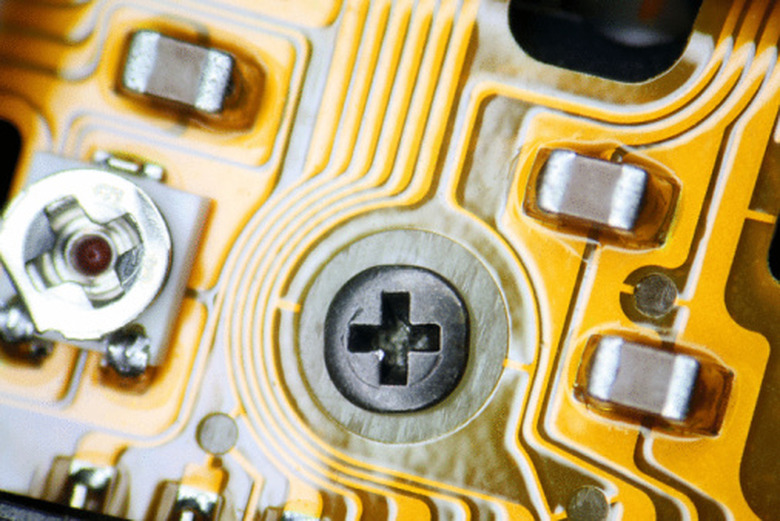The Uses Of Electrical Conductors & Insulators
Electrical and electronic circuits – and the modern technologies that utilize them – could not operate properly without the aid of electrical insulators and conductors. These essential components can be found in a wide variety of environments, made from plastics, glass, rubber and other materials. Examples of insulators and conductors can be found in the home, on the street, in the office and a vast number of other locations.
TL;DR (Too Long; Didn't Read)
Electrical insulators, such as glass, rubber, ceramics and plastic, exhibit a resistance that inhibits or entirely prevents electricity from traveling through. In contrast, electrical conductors such as most common metals – silver, copper and steel – exhibit little resistance to electrical flow that encourages the travel of electricity. Examples of each can be found in most mundane settings. Charging cables use both to move electricity from a power source to an electronic device.
Electron Influences
Electron Influences
Whether a material is an insulator or a conductor is determined by the electrons of that material. While external forces can force some of a stubborn material's electrons to transfer to another material – as occurs when friction between skin and cloth causes static electricity to build up – usually, a material's electrons either have little freedom to move or are so loosely bound that they drift in the space between the material's atoms. This property usually cannot be changed, but in certain scenarios, such as with oxidized metals, it is possible for a conductor to degrade into a semiconductor – a material with a resistance that falls between insulator and conductor. Silicon, used in the printing of circuit boards and other electronic components, is a crucially important semiconductor.
Insulators
Insulators
When a material's electrons have little freedom to move from atom to atom, the material functions as an electrical insulator. Examples of this include glass, rubber, plastic and air – the former three of which are often used in electronic circuitry and wiring. Rubber, in particular, is often used as a wearable insulator to protect electricians and other specialists from shocks that could be dangerous or deadly without protection. At the same time, plastic is used in the coating of power cables to ensure that electricity flows only from the power source to your electric devices. In power generation, electric cables are protected from the metal of the towers that carry them with large glass insulators.
Conductors
Conductors
In contrast to insulators, conductive materials have electrons that loosely drift between that material's atoms. Metals are the best-known conductors with silver, copper and gold standing as the three most conductive metals known. Almost all electrical wire and solder used to join electrical components is made from one of these three metals. Many liquids function as conductors as well. Large-capacity batteries contain electrolytes that allow electricity to travel from the battery's electrode to the battery's terminals.
Cite This Article
MLA
Flournoy, Blake. "The Uses Of Electrical Conductors & Insulators" sciencing.com, https://www.sciencing.com/uses-electrical-conductors-insulators-8186451/. 4 June 2018.
APA
Flournoy, Blake. (2018, June 4). The Uses Of Electrical Conductors & Insulators. sciencing.com. Retrieved from https://www.sciencing.com/uses-electrical-conductors-insulators-8186451/
Chicago
Flournoy, Blake. The Uses Of Electrical Conductors & Insulators last modified March 24, 2022. https://www.sciencing.com/uses-electrical-conductors-insulators-8186451/
